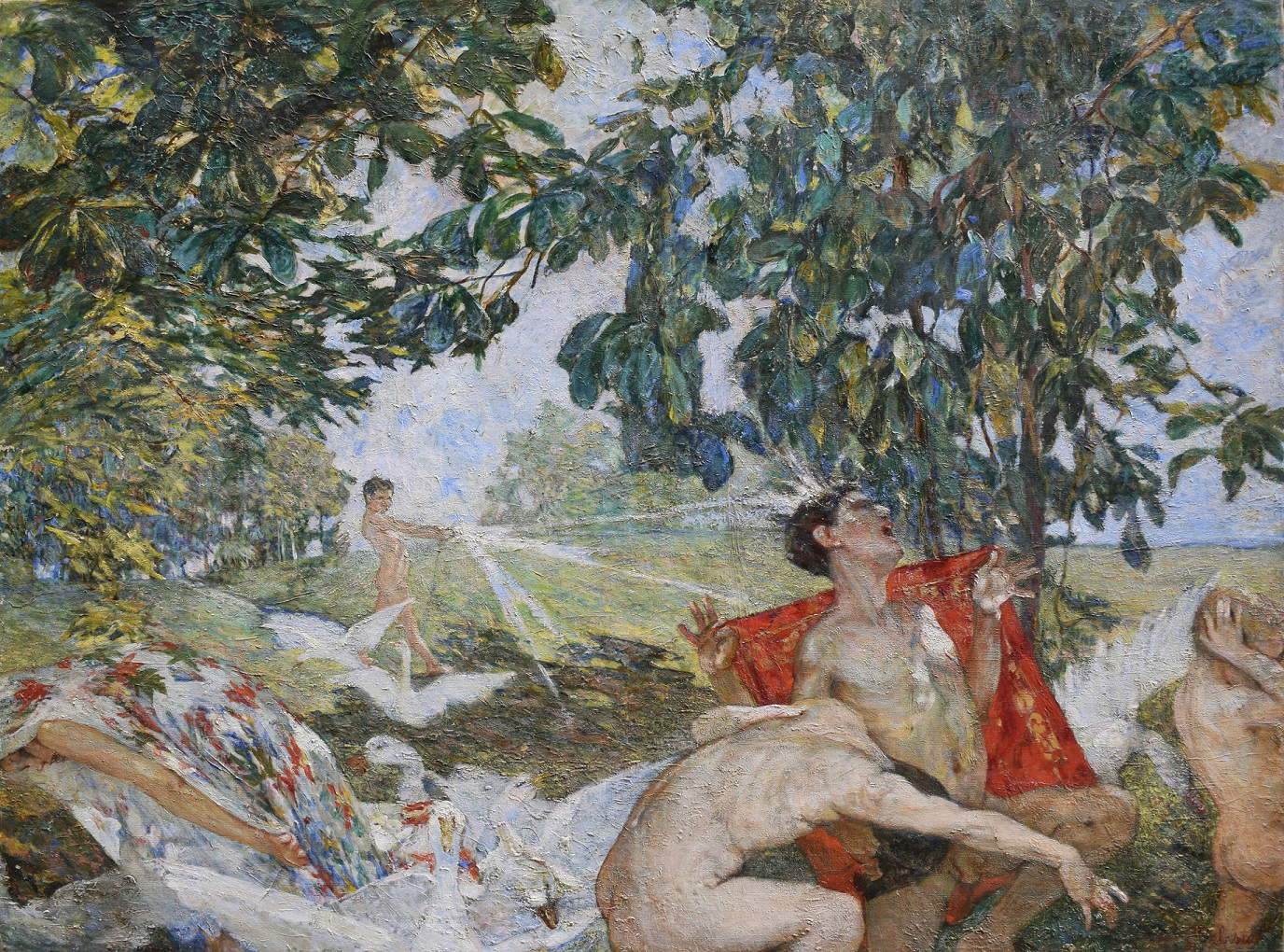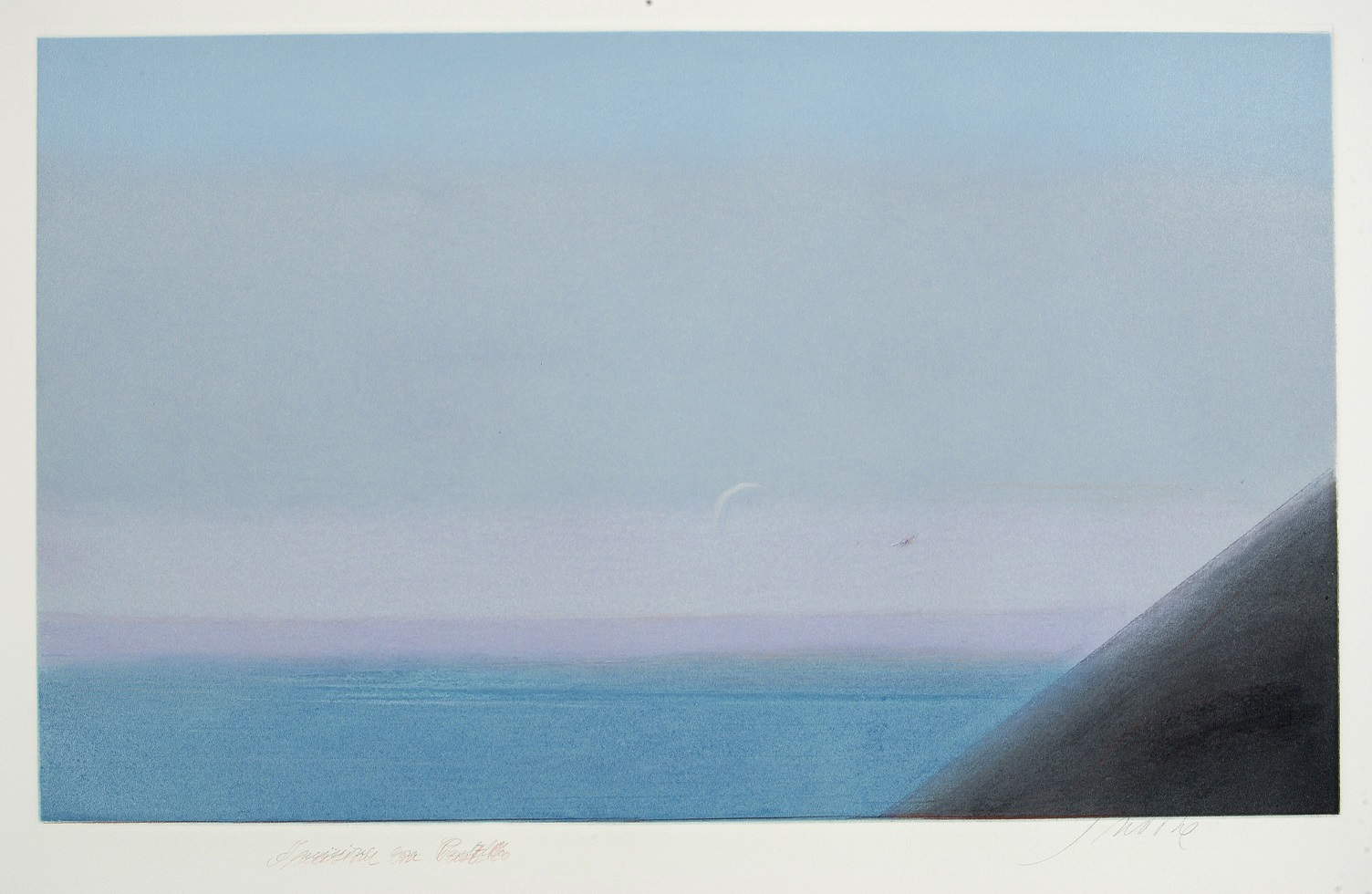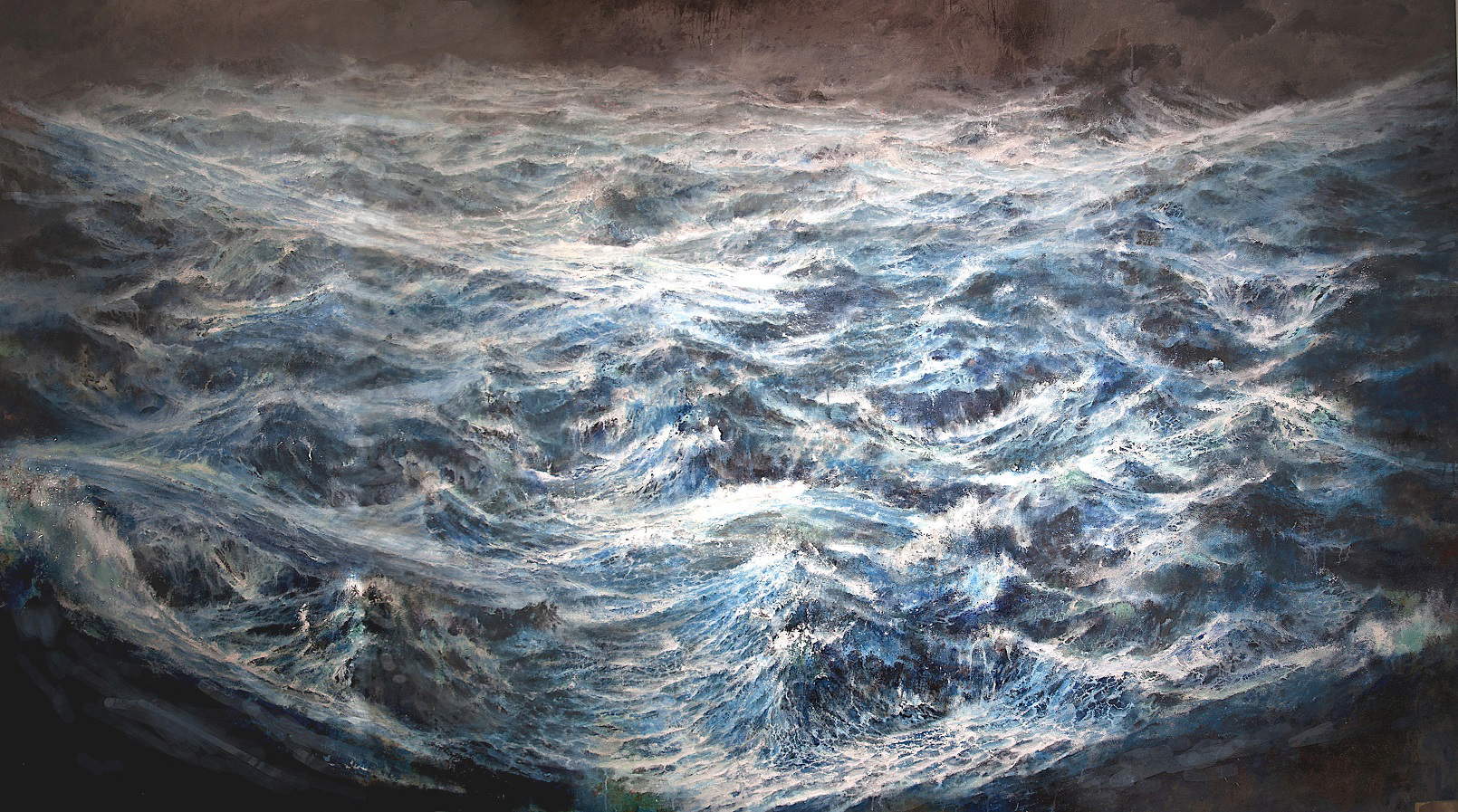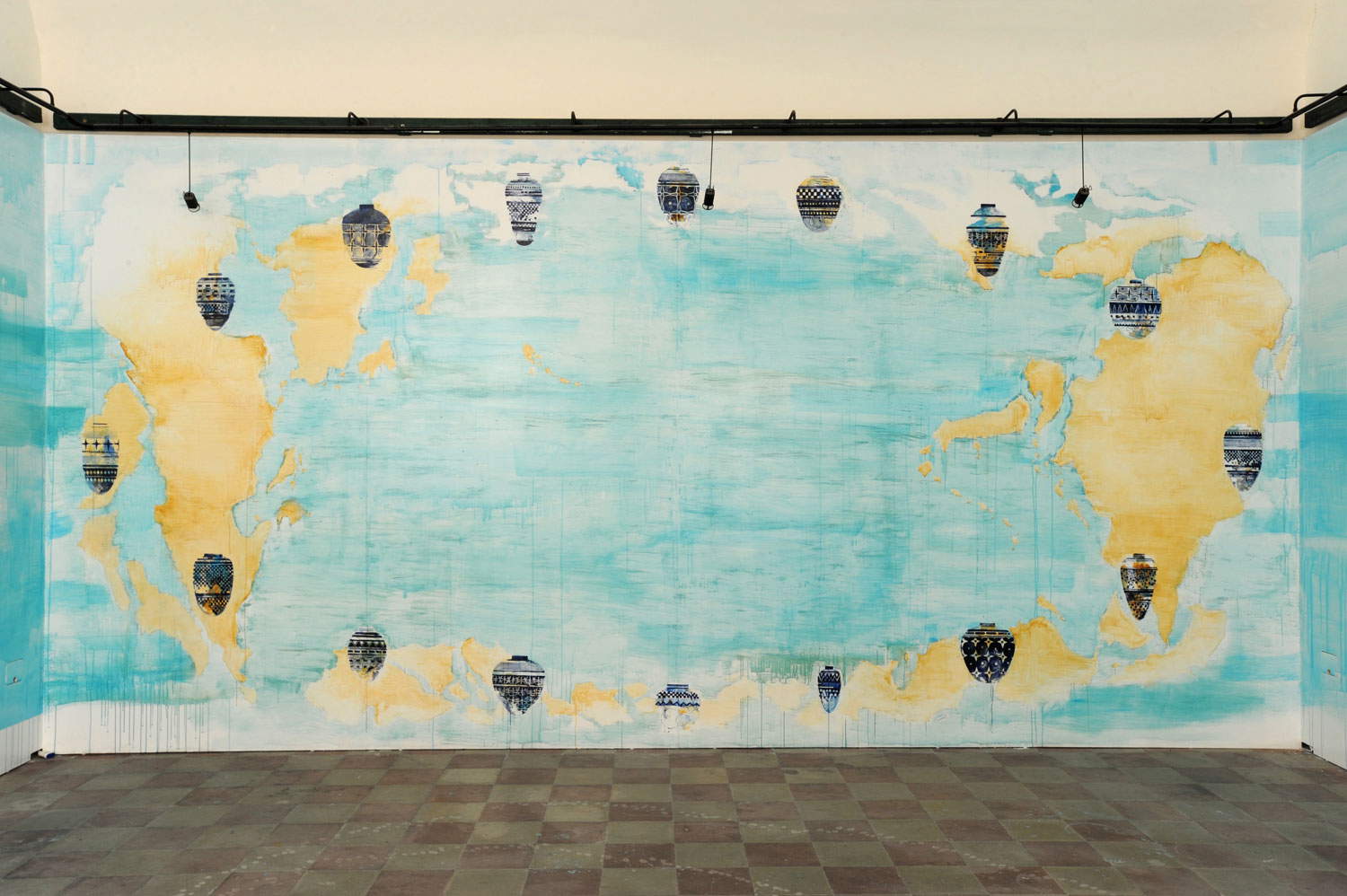Island and sea. Telling in images about water. On an island. Trivialization is the most predictable of ambushes that the ease of the theme could tend to. And instead by “complicating” with content, with variations on the theme, with intriguing juxtapositions the ingredients of the exhibition dedicated to the theme of water through the paintings of two centuries, the 19th and 20th centuries, in Lipari, in thearchipelago of the Aeolian Islands, not only managed to escape from the grip of ordinariness, but also recovered the taste for small, sustainable exhibitions, without any big staging fireworks. The places where it is set up, from June 26 until the end of October (open date), Paintings on Water. From Sartorio to De Conciliis, between the rooms of the Bernabò Brea Archaeological Museum and the main aisle of the former Church of Santa Caterina, with their discreet and no less evocative charm, are enough for the works and the works are enough for the exhibition. Without frills.
Promoted by the Aeolian Archaeological Park, it is produced, in collaboration with the Sicilian Region, Department and Department of Cultural Heritage and Sicilian Identity, by Lorenzo Zichichi’s Il Cigno GG Edizioni. Not only a publishing house specializing in art books, but also a promoter of contemporary art at the international level, the latter is credited with having inaugurated for the first time in Sicily in 2011 the winning combination of contemporary art and archaeology with the unforgettable exhibition of Igor Mitoraj in the Valley of the Temples.
The exhibition is as consubstantial of the protagonist element: it flows liquid among the nineteen canvases on display. Works by Giorgio Belloni, Moses Bianchi, Carla Celesia Di Vegliasco, Bruno Croatto, Vittore Grubicy De Dragon, Karl Lindemann-Frommel, Plinio Nomellini, Carlo Passigli, Attilio Pusterla, Giulio Aristide Sartorio; while for the twentieth century and contemporaries there are Vito Bongiorno, Ettore De Conciliis, Piero Guccione, Francesco Santosuosso and Luciano Ventrone. No preordained route to harness the freedom of those who set out to visit as in an anabasis, ascension, physical and spiritual, to the highest point of the once fortified island, passing through the ruins of thick walls, where windows open onto infinite horizons of the sea that the visitor will soon find again in the canvases. Already the route to the exhibition venues is an antechamber that disposes the soul for the visit.
“The range of stylistic, conceptual and thematic approaches to the image of water is absolutely varied, and it is independent of the chronology of the works,” explains curator Brigida Mascitti. There is the dry reproduction of optical impressions in Luciano Ventrone ’s Restless Sea (2020) and the ancestral image of Francesco Santosuosso’s Tempest on the Primordial Ocean (2015), which is an overlook of all the energy of the sea known and feared since antiquity. And the words of the late Folco Quilici, in what would be his last book, All Around Sicily. A Sea Adventure (2017), “half-open its mouth the white geological monster created by underwater violence around the island of Panarea.”
 |
| Carla Celesia di Vegliasco, Acqua e sole (1912; oil on canvas) |
 |
| Bruno Croatto, Canal in Venice (1939; oil on canvas) |
 |
| Piero Guccione, Black and Blue Study (2003; pastel) |
Not far away even physically from the turbulence of these works set up at the church of Santa Caterina, one finds quieter, more subdued images among the rooms of the Archaeological Museum with amphorae recovered from the sea abysses of the Aeolian Islands, polychrome vases by the “Lipari Painter,” and one of the richest collections of masks from Greek tragedy and comedy. Away from the clamors of daily life, here are the “very human” scenes of the Fisherman’s Family (1890) by Moses Bianchi or in Carlo Passigli’s Bimbi al mare (1920-30). An afflatus between poetry and myth is, on the other hand, in Carla Celesia di Vegliasco’s metaphor, Acqua e Sole (1912), where the aquatic element participates in the dense symbolism of the scene, between male nudes and luministic acrobatics. Antonio Fontanesi, an Emilian landscape painter famous throughout Europe in the second half of the 19th century, said that “the landscape must be something more than positive reality.” Compared to the calm style of his landscapes this “something more” is as if “exploding” in the canvas of Celesia di Vegliasco.
Panta rei, but nothing flows as fast as existence. Ungraspable and vigorous as in the view of Attilio Pusterla’s The Port of New York (1912). For this as for other declinations of the relationship between the city and water we must move back to the museum rooms, where we find Brazil. Around Olinda (1924) by Giulio Aristide Sartorio or the Venice Canal (1939) by Bruno Croatto. Then there are views of seaside towns and islands as in Giorgio Belloni ’s Genova Quarto (1910-15) and Plinio Nomellini ’s Spiaggia all’isola d’Elba (1920). Inevitable, of course, is Sicily, which carves out a place of honor with the exhibition’s signature work, De Conciliis’s spectacular twilight view of the Port of Palermo (2010), framed by the backdrop of the apse of Santa Caterina. It was, however, specially made for the exhibition My land, a tribute to his homeland by Vito Bongiorno.
“Snatched from the sea and consigned to oblivion,” wrote the aforementioned Quilici with the anger of resignation on the occasion of the fortunate discovery of a precious Mycenaean amphora “of interest to the museum,” but which, “brought to the surface with risk and effort,” was left on the ground “just beyond the entrance door of the archaeological museum of the Aeolian Islands.” The documentarian found it still there years after what should have been a temporary solution. An effort that elsewhere would be ordinary becomes an achievement here.
 |
| Ettore De Conciliis, The Port of Palermo in the Evening (2010; oil on canvas) |
 |
| Francesco Santosuosso, Tempesta sull’oceano primordiale (2019; oil and acrylic on canvas, 224 x 370 cm) |
 |
| Piero Pizzi Cannella, Map of the world, the island’s fish pots (2014, mixed media on plaster, room size) |
Since he took office, the new director of the Aeolian Archaeological Park, Rosario Vilardo, has fully immersed himself in an opposite endeavor: wresting from oblivion and handing over to visitors places that were no longer accessible, making the Museum of Memory, the fifty-seat indoor Theater, and the small library usable again. Spaces created as part of the project to create the Center for Contemporary Art in Lipari, financed with Po Fesr 2007-2013 and concluded in 2015, with the transformation of a place of confinement for political dissidents into an extraordinary art space: eight cells turned into halls with permanent installations by Basilé, Tahar Ben Jelloun, Emanuele, Pizzi Cannella, Plessi, Savini, along with Mitoraj’s “corridor” and the Porta del Mare, of access to the museum space of the former penitentiary, by de Conciliis and Caminiti, inaugurated with the major exhibition “Eolie 1950/2015. Mare Motus,” curated by Lea Mattarella and Zichichi.
The integrated ticket allows visitors to visit these spaces as well. An exhibition within the exhibition, where contemporary art, which as a language of the present is the antithesis of the ancient, instead takes on an unprecedented effect of corrosion, not intended by the hand of an artist, but by something similar to the seventeenth-century concept of “Painter Time,” by which was meant the positive passage of years on the work of art, which gained in harmony. Moving from one former cell to the next provokes the strong emotions of a Piranesian engraving declined in a contemporary key: among saline efflorescence already sprouting from the plasterwork a little more than a five-year period after the works on recalled and a spontaneous vegetation that slowly takes over the spaces, one finds again of those eighteenth-century engravings the sense of the dignity of the past (in this case that of the imprisoned political dissidents) combined with an inexorable abandonment.
And as in a game of Chinese boxes, another surprise is reserved for the visitor: he or she will also be able to admire again the bronze or steel sculptures from the Umberto Mastroianni monograph set up last summer, between the museum rooms and the site-specific works in the former cells. Thanks to the generosity of Lorenzo Zichichi, who had produced that event as well, the postponement of their return due to the limitations imposed by the health emergency was positively reversed into an extension of the loan.
Warning: the translation into English of the original Italian article was created using automatic tools. We undertake to review all articles, but we do not guarantee the total absence of inaccuracies in the translation due to the program. You can find the original by clicking on the ITA button. If you find any mistake,please contact us.